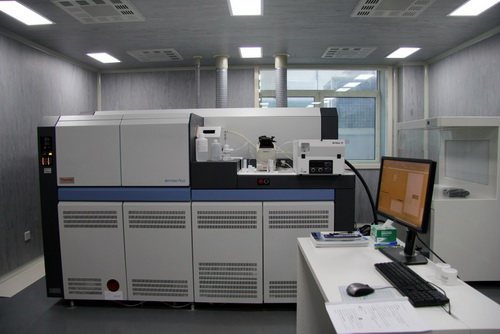|
Laboratories of Geochemistry
|
Uranium Series Chronology Laboratory
1. Introduction 2. Facilities
This instrument was equipped with nine Faraday cups (with 1010 Ω,1011 and 1013 resistors) and one secondary electron multiplier (SEM) with one retarding potential quadruple lens (RPQ) system in the back. An Aridus II desolvator (CETAC) and an auto-sampler ASX-112FR were used for sample introduction to reduce solvent interference, improve signal stability. 3. Experimental conditions
The water purification system includes a pretreatment system, Milli-Q Elix-35 and Milli-Q Advantage A10. The system has a 200 L tank, which can produce 15 MΩ water in 35 L/h for supplying 18.2 MΩ water continuously. The U-Th blank of the water is low and suitable for the U-series work. 4. Analysis item
Press
+ More
|
Head of Lab

Associate Professor |
-
SIMSSecondary Ion Mass Spectrometer Laboratory
-
MC-ICPMSMultiple-collector ICPMS Laboratory
-
EM & TEMElectron Microprobe and Transmission Electron Microscope Laboratory
-
SISolid Isotope Laboratory
-
StIStable Isotope Laboratory
-
RMPARock-Mineral Preparation and Analysis
-
AAH40Ar/39Ar & (U-Th)/He Laboratory
-
EMLElectron Microscopy Laboratory
-
USCLUranium Series Chronology Laboratory
-
SASeismic Array Laboratory
-
SEELaboratory of Space Environment Exploration Laboratory
-
PGPaleomagnetism and Geochronology Laboratory
-
BioMNSFrance-China Bio-mineralization and Nano-structure Laboratory



